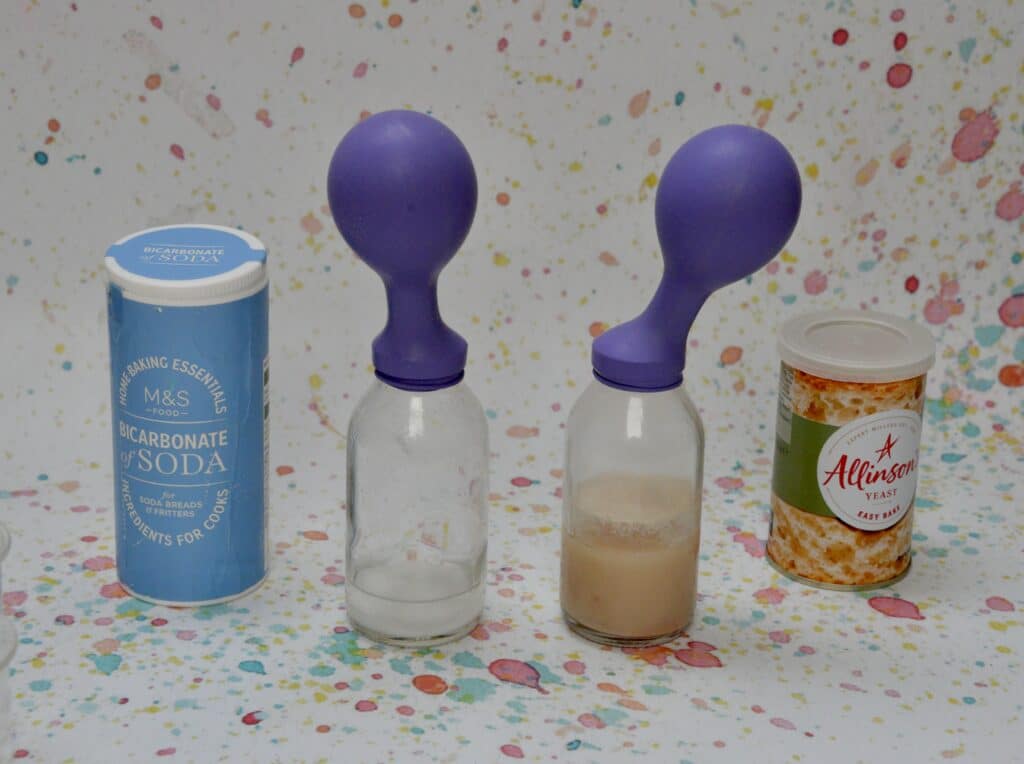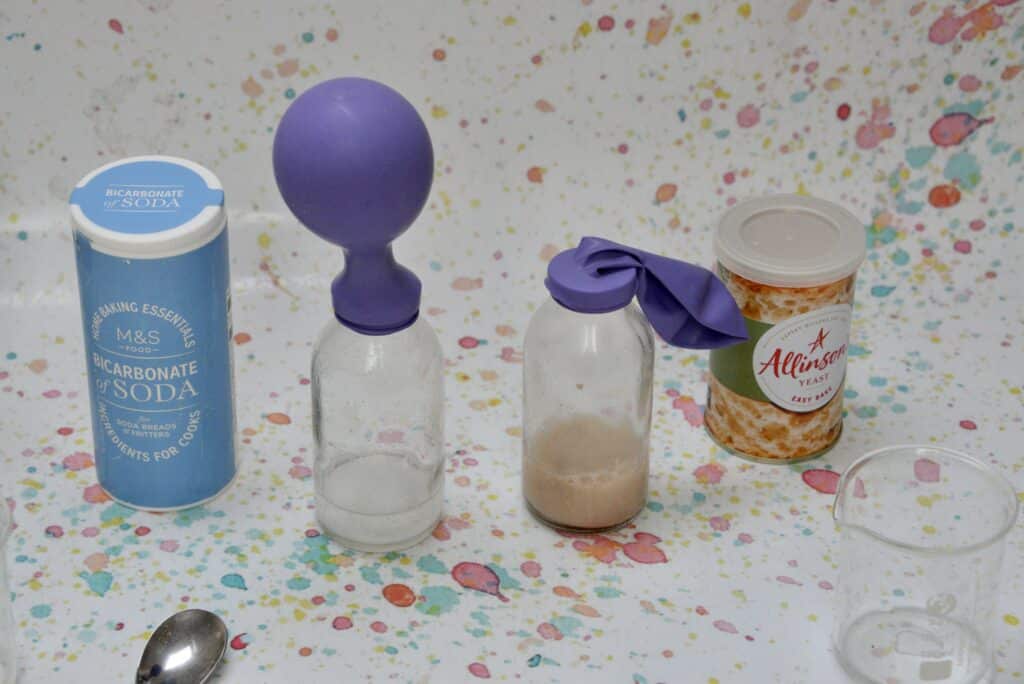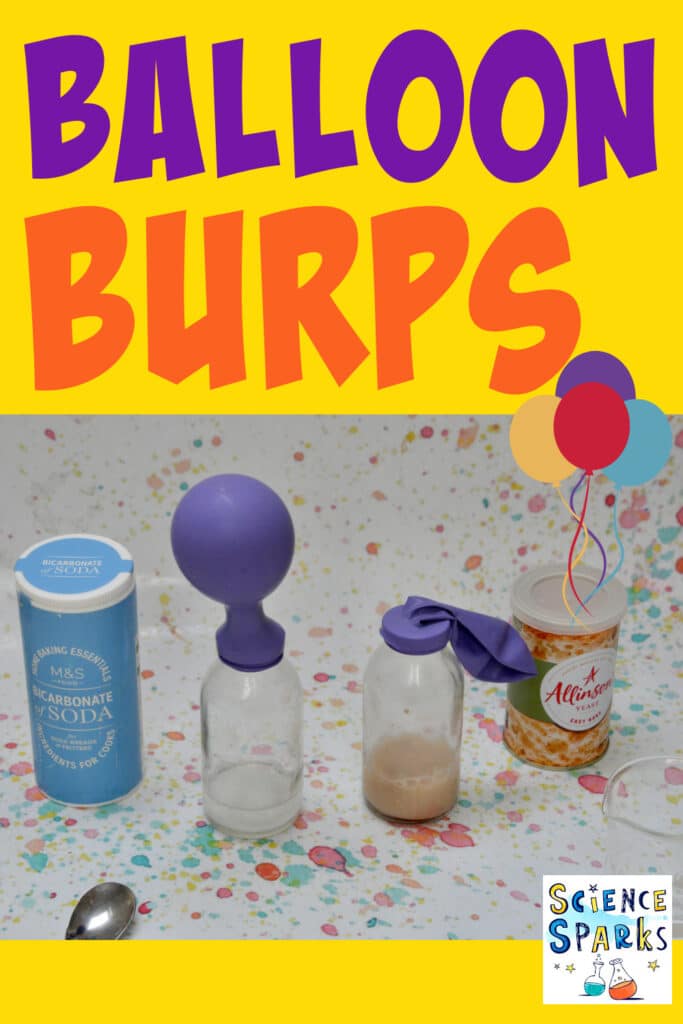If you eat or drink too quickly, you might find you burp! Burping is how extra gas is expelled from the body. The gas is forced out of the stomach up the oesophagus and out of the mouth!
These burping balloons are very easy to set up and great fun to watch. The balloons will only inflate a little, so don’t expect anything too impressive!
If you like this activity you’ll LOVE my other activity ideas for learning about the body!
Burping Balloons Science Activity
You’ll need
2 plastic or glass bottles
2 balloons
1 teaspoon of dried yeast
1 teaspoon bicarbonate of soda ( baking soda )
1 teaspoon sugar
20 ml vinegar
20ml warm water
Instructions
Carefully add one teaspoon of yeast and one teaspoon of sugar into one bottle.
Pour about 20ml of warm water into the same bottle and quickly pop a balloon over the top of the bottle.
Watch as the balloon inflates.
Add two teaspoons of bicarbonate of soda to the second bottle. Pour 20ml vinegar over the top and pop a balloon on the bottle.
Watch as this balloon inflates.
Leave the balloons for about 15 minutes to inflate. The bicarbonate of soda reaction will be faster than the yeast reaction.
Carefully remove the balloons from the bottles, you should hear a burping noise as the air escapes.

What’s happening?
Both balloons are filled with carbon dioxide from the chemical reaction that happened in the bottle. The carbon dioxide gas fills the bottle and inflates the balloons.
Yeast
Dried yeast is dormant ( inactive ) but when you add it to warm water and provide it with sugar for energy it becomes active. Yeast uses sugar and oxygen to create energy for itself using a process called respiration. Carbon dioxide is given off during the reaction, which is the gas that inflates the balloon.
Too much yeast in the stomach can make humans extra gassy!
What if you don’t add the sugar?
If you don’t give the yeast sugar for respiration, it won’t produce any gas, and the balloon won’t inflate.

Bicarbonate of Soda and Vinegar
If you combine an acid ( vinegar ) and an alkali ( bicarbonate of soda ), they react to neutralise each other. The reaction releases carbon dioxide gas, which fills the jar and inflates the balloon.
The amount the balloons inflate is limited by the amount of reactants you can add to the bottle. If you add too much baking soda and vinegar, the fizz will overflow out of the bottle, and you can’t add extra reactants without letting air out of the balloons.

Last Updated on March 4, 2025 by Emma Vanstone

Leave a Reply